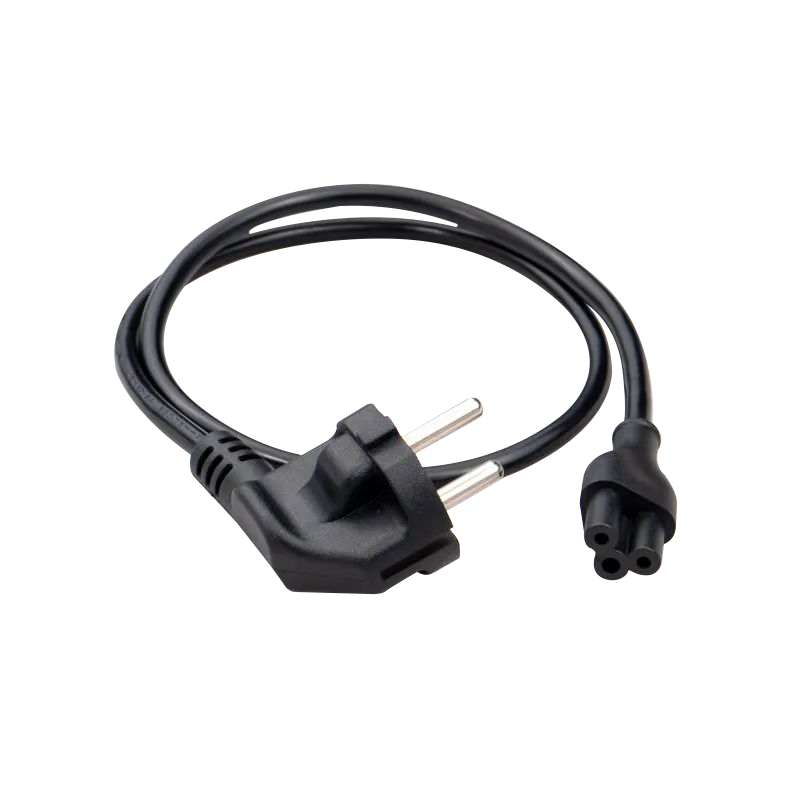Regularly checking the status of the power extension cable is a key step to ensure its safety and good conductivity. In order to avoid electrical failures or safety hazards during the use of the power extension cable, the following are some effective inspection methods and precautions:
First, check whether the outer skin of the power extension cable is intact and whether there are cracks, aging, damage or perforations. Damage to the outer skin may expose the wires, causing electric shock or short circuit.
Check whether the joints of the plug and the socket are firm and whether there are signs of looseness or wear. Loose plugs and sockets may cause poor contact, which will affect conductivity.
Power extension cords should avoid excessive bending or knotting for a long time, because excessive bending can cause internal wires to break or poor contact.
Check whether the plug has signs of burning, discoloration, melting or cracking. These problems are usually caused by overload use or poor contact.
Check whether the socket is deformed, burned or loose. Loose sockets may cause poor electrical contact and increase safety hazards.
Make sure that the metal contact points of the socket and the plug are not corroded, oxidized or loose. If the metal contact points are damaged, resistance will be generated when the current passes through, resulting in poor conductivity.
Use an electrical test tool such as a multimeter to test the conductivity of the extension cord. Measure the resistance of the wire to determine if there is a break or poor contact in the wire. The resistance of the wire should be very low, close to zero. If the resistance is high, it may indicate that the wire is damaged.
Use the extension cord under normal load and monitor its temperature rise. The temperature of the extension cord should not be too high when the equipment it carries is working properly. If the wire overheats, it may mean that its conductivity is affected or it is overloaded.
Extension cords should not be bent or tied frequently, especially at plugs or sockets. Long-term bending can cause internal breaks in the wire core or poor contact of the wire. Check the bends of the extension cord regularly, especially in places that are prone to physical damage (such as the plug and socket connection).

If the extension cord is used in a humid environment (such as the bathroom, kitchen, outdoors, etc.), it is necessary to check whether there is any moisture entering the cable. Moisture entering the extension cord can cause poor current conduction and even cause the risk of electric shock. Make sure the extension cord has good waterproof performance.
Especially when used outdoors, check whether the protective layer of the extension cord is damaged to prevent moisture or dust from entering and affecting electrical safety.
Connect the power extension cord to a regular load (such as a low-power device such as a desk lamp or electric fan), and plug and unplug the plug and socket one by one to check whether the connection is firm, loose or in poor contact.
When using the extension cord, observe the operating status of the connected device. If the device often loses power or does not work properly, it may be caused by poor contact or unstable current of the power extension cord.
The plug and socket parts of the power extension cord should be cleaned regularly to remove dust and impurities. Dust and dirt accumulated between the plug and socket may cause poor contact and affect conductivity.
The power extension cord should avoid being exposed to high temperature for a long time. Excessive temperature will accelerate the aging of the wire and reduce the temperature resistance of the insulation layer.
The power extension cord should avoid being exposed to humid environments for a long time, especially when used outdoors, pay attention to whether the cable is waterproof to prevent electrical failures.
Regularly checking the status of the power extension cord is a necessary measure to maintain its good conductivity and ensure safety. By checking the appearance of the power extension cord, the plug and socket, the conductivity of the wire, the bending condition, the waterproof and moisture-proof condition, the use environment, and other aspects, potential hidden dangers can be effectively identified and electrical failures can be prevented. Any problems found should be replaced or repaired in a timely manner to avoid continued use of the extension cord when it poses a hidden danger.



 English
English русский
русский















